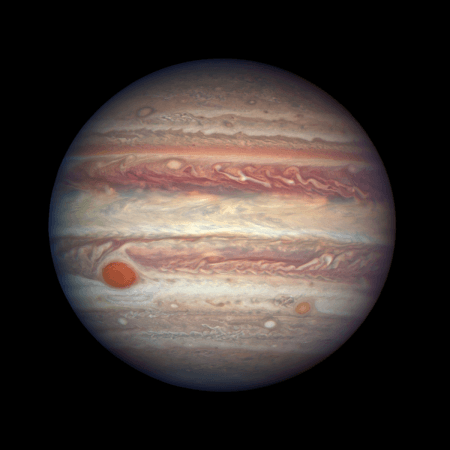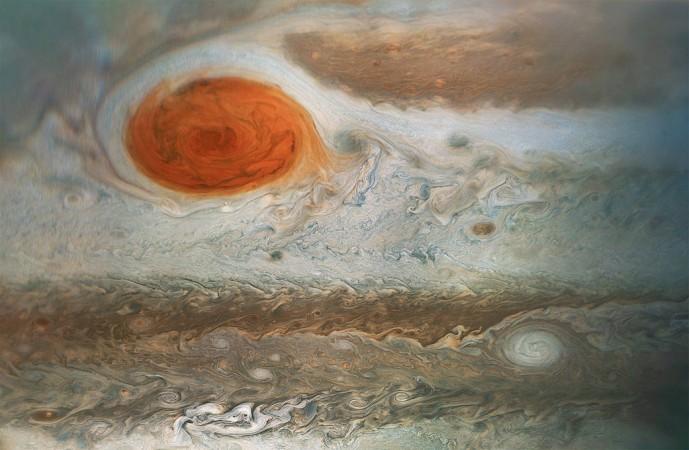
NASA is preparing to launch the James Webb Space Telescope and once launched, one of its missions will be to stare directly at Jupiter's defining feature – the Great Red Spot (GRS).
The space agency announced that the James Webb telescope will be the most ambitious and complex space observatory ever built. For the Jupiter mission, it will be using infrared instruments, specifically its mid-infrared instrument (MIRI) to study the GRS and add to the existing data that Hubble and other observatories have made till date.
Jupiter's Great Red Spot is the Solar System's largest storm and has been raging for the last couple centuries now – at least 350 years. However, reports emerged earlier this year that it is steadily weakening and is likely to completely disappear in about 10 years from now.
The Great Spot is on the list of targets chosen by guaranteed time observers (GTO) on what the Webb will definitely be used for. GTOs are the team of scientists who helped develop and build the incredibly complex telescope. They will also be among the first who are given preference to use it and observe the universe.

Of the many science missions that Webb has, one of them is to study planets, not just distant exoplanets, but also nearby ones right here in the Solar System, says NASA. Webb will be used to study planets from Mars out to the edges of the observable universe.
One of the reasons as to why Webb's MIRI will be trained at the GRS is to find out what exactly is causing the striking red colour. "We'll be looking for signatures of any chemical compounds that are unique to the [Great Red Spot]...which could be responsible for the red chromophores," said Leigh Fletcher, lead scientist on the Webb telescope's observations of Jupiter's storm.
Chromophores, explains NASA is what gives molecules their colour. "If we don't see any unexpected chemistry or aerosol signatures...then the mystery of that red colour may remain unresolved," Fletcher added.
Using infrared instruments also means that the heat signatures of the massive storm can be studied. It will be possible to see if the storm is generating heat and pumping it into the gas giant's upper atmosphere, says the NASA report.






!['It's not Mumbai traffic, it's air traffic': Suriya apologises to Mumbai media after paparazzi yelled At Him for making them wait for hours [Watch]](https://data1.ibtimes.co.in/en/full/806234/its-not-mumbai-traffic-its-air-traffic-suriya-apologises-mumbai-media-after-paparazzi.jpg?w=220&h=138)
![Bigg Boss 16-fame Sreejita De and Michael Blohm-Pape exchange wedding vows in dreamy Bengali ceremony [Inside Pics]](https://data1.ibtimes.co.in/en/full/806233/bigg-boss-16-fame-sreejita-de-michael-blohm-pape-exchange-wedding-vows-dreamy-bengali-ceremony.jpg?w=220&h=138)






